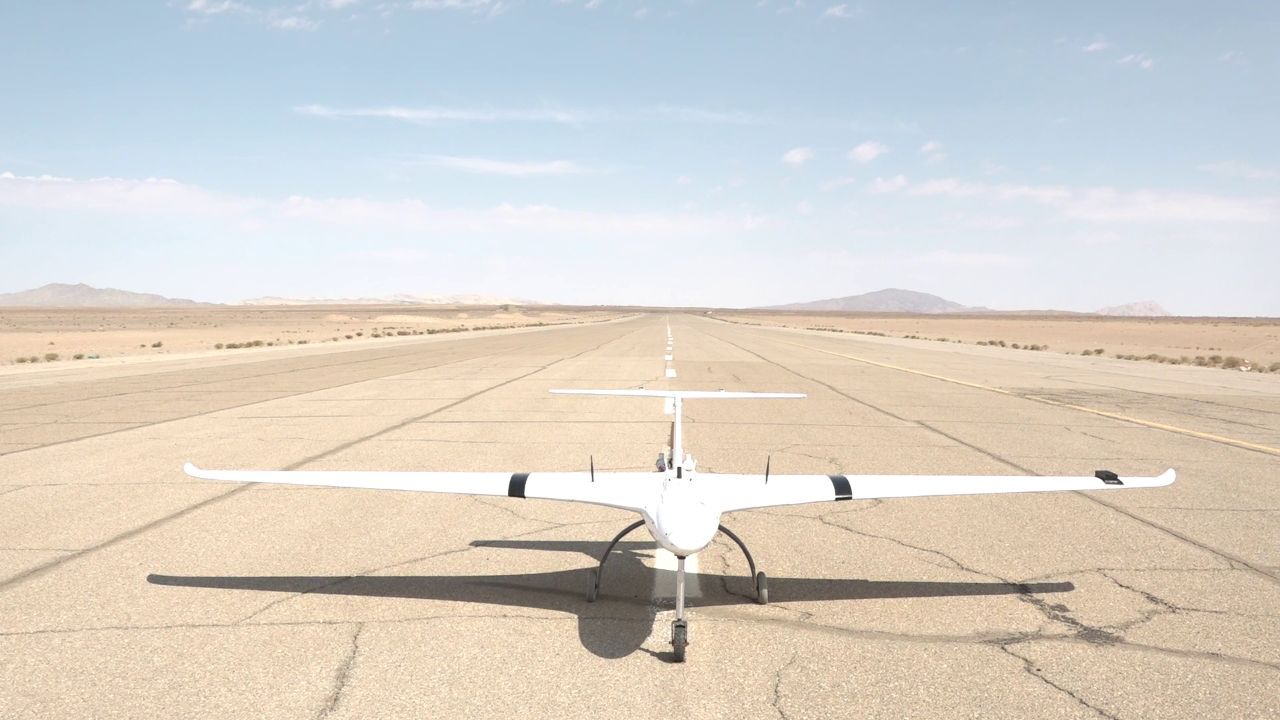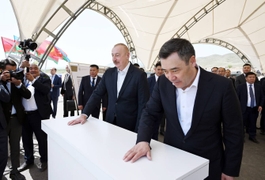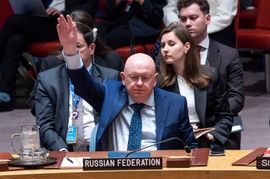The Iranian Army brought into operation a new homegrown drone “Kaman-19”, in an annual joint exercise involving drones from the Iranian Army’s four units – Ground Force, Navy, Air Force, and Air Defense Force – across large parts of central and southern Iran.
Brigadier General Alireza Sheikh, Spokesperson for the ongoing drills, said the drone joined the Army’s fleet for the first time and carried out combat sorties in the electronic warfare exercises, Mehr News Agency reported on October 3.
The new unmanned aerial vehicle (UAV) executed electronic warfare methods, including air base disruption operations, he said.
He also said that the army used swarm drones in the main part of the drill, and added “drones flew in groups of three or more and carried out missions involving surveillance and the destruction of ground and aerial targets”.
The main drone drill kicked off on the morning of October 3, with around 200 various unmanned aircraft. Surveillance and reconnaissance drones carried out operations, including monitoring the borders, identifying specific targets, and taking pictures.
In the exercise, a large number of UAVs will be used in special and difficult conditions and will be evaluated for surveillance and reconnaissance, electronic warfare, and combat, according to Deputy Chief of the Iranian Army for Coordination Rear Admiral Habibollah Sayyari,
In February 2021, Iran unveiled the Kaman-12 – the first domestically developed wide-body combat drone. Inspired by the US-made MQ-1 Predator, Kaman-12 has a 3,000-km range and can carry up to 300 kg of explosives.
In addition, Brigadier General Reza Khajeh, Deputy Commander of Operations of Air Defense Force, pointed out the use of the new medium-range radar system Jalilvand by the Iranian Army. Jalilvand was first exhibited on September 22 during the Iranian army parade.
He said on October 3 within the framework of the drills that "the Shahid Jalilvand radar system has been designed to enhance the detection ability of the air defense system at medium range."
Khajeh noted that the radar can also be used in electronic warfare, and added it is a phased-array radar that can detect micro air vehicles.
Ahead of the drills, Sayyari said on October 2 that the country’s drone power has advanced to a level that can counter any threats posed by the enemies.
“Our drone power is very high and we can count on it and it will bring us success in any operation,” Sayyari said, adding, “The drone power of the country’s Army and Armed Forces is among the top drone powers in the region. The combat power of our country's Armed Forces has reached a position that can respond to any threats on land, sea, and air by using the drone power,” Sayyari said.
Last month, the chief of staff of the Iranian Armed Forces said the demand for the purchase of Iran’s homegrown drones is much greater than the country’s production.
In recent years, Iranian military experts and technicians have made significant strides in domestically producing a wide array of equipment and achieving self-sufficiency in the realm of weaponry. Iranian officials have consistently emphasized their commitment to enhancing military capabilities, including missile and drone technology, despite Western sanctions.
The West has often voiced concern of Tehran’s support of Russia in the Ukrainian conflict and the provision of arms, particularly kamikaze drones; however, Iran denies supplying these arms with the intent for use in the war while acknowledging the delivery of a “limited number” of drones several months prior to the Russian invasion of Ukraine.
Deputy Speaker of the US State Department Vedant Patel stated in his video briefing on October 3 that new weaponry in the hands of the Iranian regime brings destruction and chaos in countries and regions where Iran wants to increase its role.
Patel recalled that over the past two years, the US administration has been paying attention, in particular, to the deepening of the military partnership between Iran and Russia. “Any potentially new weapons system in the hands of Tehran increases the potential risk of destabilisation in countries and regions outside Iran,” he stressed.







 Kyrgyzstan has joined the extensive reconstruction efforts in the Karabakh region of Azerbaijan, after a series of mega initiatives were launched b...
Kyrgyzstan has joined the extensive reconstruction efforts in the Karabakh region of Azerbaijan, after a series of mega initiatives were launched b...
 President Ilham Aliyev shed light on the evolving contours of the peace process with Armenia during an international conference in Baku this week. ...
President Ilham Aliyev shed light on the evolving contours of the peace process with Armenia during an international conference in Baku this week. ...
 Azerbaijan and Armenia started the process of demarcation of their border on Tuesday, with the installation of the first border markers based on ge...
Azerbaijan and Armenia started the process of demarcation of their border on Tuesday, with the installation of the first border markers based on ge...
 As the conflict between Ukraine and Russia escalates, the strategic importance of Kharkiv, Ukraine's second-largest city, has come sharply into focus.
As the conflict between Ukraine and Russia escalates, the strategic importance of Kharkiv, Ukraine's second-largest city, has come sharply into focus.
 Iran and Pakistan have signed eight cooperation documents in various fields, and agreed to strengthen ties to fight terrorism in the region.
Iran and Pakistan have signed eight cooperation documents in various fields, and agreed to strengthen ties to fight terrorism in the region.



